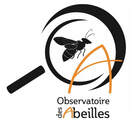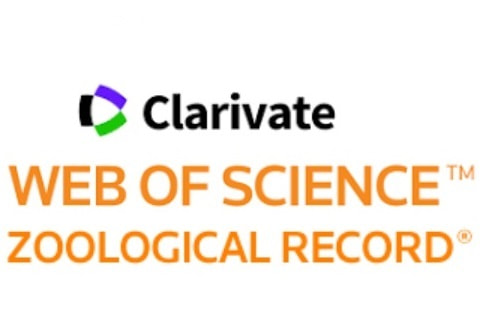Revue d'Hyménoptérologie
Journal of Hymenopterology
ISSN 2727-3806
ARTICLE |
The wool carder bee Pseudoanthidium alpinum (Morawitz, 1873): identity of the enigmatic type species of the genus Pseudoanthidium (Hymenoptera: Megachilidae: Anthidiini)
|
Max Kasparek, Andreas W. Ebmer
|
Citation
Kasparek, M. & A. W. Ebmer (2023). The wool carder bee Pseudoanthidium alpinum (Morawitz, 1873): identity of the enigmatic type species of the genus Pseudoanthidium (Hymenoptera: Megachilidae: Anthidiini). Osmia, 11: 39–50. https://doi.org/10.47446/OSMIA11.7
Received 01 March 2023 - Accepted 23 August 2023 - Published (online) 24 August 2023
Indexation • Archivage - Archiving
Abstract
Pseudoanthidium Friese is a species-rich genus of wool carder bees (Anthidiini) in the Old World. Pseudoanthidium alpinum (Morawitz, 1873), originally described from the Caucasus Mountains, was chosen as the type species of the genus, although it was insufficiently known. A genetic analysis of the mitochondrial cytochrome c oxidase I (COI) gene (barcoding gene) of new material now allowed the unequivocal assignment of males and females to each other and proved the conspecifity of material from Spain, Greece and Georgia. It turned out that the males with their specialized hairs and combs on the metasomal sterna correspond to the characteristics of Pseudoanthidium s. str., but females with their fully exposed, protruding clypeal apex to the subgenus Royanthidium Pasteels, 1969. A similar combination of male and female characters was also found in three other species of Pseudoanthidium. As the protruding clypeal apex is thus found in both subgenera, this trait proves to be inappropriate for subgeneric classification and indicates that the definition of the subgenus Royanthidium needs to be revised.
Keywords
Anthidiine bees, infrageneric division, subgenera, taxonomy, subgenus Royanthidium
Titre (traduction)
L’Abeille cotonnière Pseudoanthidium alpinum (Morawitz, 1873) : identité de l’énigmatique espèce-type du genre Pseudoanthidium (Hymenoptera : Megachilidae : Anthidiini)
Résumé
Pseudoanthidium Friese est un genre regroupant de nombreuses espèces d’abeilles cardeuses (Anthidiini) de l’Ancien Monde. Pseudoanthidium alpinum (Morawitz, 1873), initialement décrite des montagnes du Caucase, a été choisie comme espèce-type représentant le genre, bien qu’elle fût insuffisamment connue. Une analyse génétique du gène mitochondrial de la cytochrome c oxydase I (COI) obtenu à partir de matériel plus récent a permis d’apparier sans ambiguïté les sexes mâle et femelle tout en prouvant la conspécificité de matériel provenant d’Espagne, de Grèce et de Géorgie. Il est apparu que les mâles avec leurs poils spécialisés et leurs peignes sur les sterna métasomaux correspondent aux caractéristiques de Pseudoanthidium s. str., alors que les femelles avec leur marge clypéale entièrement rebordée et saillante relèvent du sous-genre Royanthidium Pasteels, 1969. Une combinaison similaire de caractères mâles et femelles a également été observée chez trois autres espèces de Pseudoanthidium. Comme l’apex clypéal saillant se retrouve donc dans les deux sous-genres, ce trait s’avère inapproprié pour une classification subgénérique et indique que la définition du sous-genre Royanthidium doit être révisée.
Mots-clefs
Anthidiini, division infragénérique, sous-genres, taxonomie, sous-genre Royanthidium
References
Kasparek, M. & A. W. Ebmer (2023). The wool carder bee Pseudoanthidium alpinum (Morawitz, 1873): identity of the enigmatic type species of the genus Pseudoanthidium (Hymenoptera: Megachilidae: Anthidiini). Osmia, 11: 39–50. https://doi.org/10.47446/OSMIA11.7
Received 01 March 2023 - Accepted 23 August 2023 - Published (online) 24 August 2023
Indexation • Archivage - Archiving
- DOI: https://doi.org/10.47446/OSMIA11.7
- Zoobank (ICZN): https://zoobank.org/E3E9475D-D973-4D3A-A6B8-6899652219E1
- HAL (CNRS-INRAE): https://hal.science/hal-04186593
- Zenodo (CERN): https://zenodo.org/record/8277842
Abstract
Pseudoanthidium Friese is a species-rich genus of wool carder bees (Anthidiini) in the Old World. Pseudoanthidium alpinum (Morawitz, 1873), originally described from the Caucasus Mountains, was chosen as the type species of the genus, although it was insufficiently known. A genetic analysis of the mitochondrial cytochrome c oxidase I (COI) gene (barcoding gene) of new material now allowed the unequivocal assignment of males and females to each other and proved the conspecifity of material from Spain, Greece and Georgia. It turned out that the males with their specialized hairs and combs on the metasomal sterna correspond to the characteristics of Pseudoanthidium s. str., but females with their fully exposed, protruding clypeal apex to the subgenus Royanthidium Pasteels, 1969. A similar combination of male and female characters was also found in three other species of Pseudoanthidium. As the protruding clypeal apex is thus found in both subgenera, this trait proves to be inappropriate for subgeneric classification and indicates that the definition of the subgenus Royanthidium needs to be revised.
Keywords
Anthidiine bees, infrageneric division, subgenera, taxonomy, subgenus Royanthidium
Titre (traduction)
L’Abeille cotonnière Pseudoanthidium alpinum (Morawitz, 1873) : identité de l’énigmatique espèce-type du genre Pseudoanthidium (Hymenoptera : Megachilidae : Anthidiini)
Résumé
Pseudoanthidium Friese est un genre regroupant de nombreuses espèces d’abeilles cardeuses (Anthidiini) de l’Ancien Monde. Pseudoanthidium alpinum (Morawitz, 1873), initialement décrite des montagnes du Caucase, a été choisie comme espèce-type représentant le genre, bien qu’elle fût insuffisamment connue. Une analyse génétique du gène mitochondrial de la cytochrome c oxydase I (COI) obtenu à partir de matériel plus récent a permis d’apparier sans ambiguïté les sexes mâle et femelle tout en prouvant la conspécificité de matériel provenant d’Espagne, de Grèce et de Géorgie. Il est apparu que les mâles avec leurs poils spécialisés et leurs peignes sur les sterna métasomaux correspondent aux caractéristiques de Pseudoanthidium s. str., alors que les femelles avec leur marge clypéale entièrement rebordée et saillante relèvent du sous-genre Royanthidium Pasteels, 1969. Une combinaison similaire de caractères mâles et femelles a également été observée chez trois autres espèces de Pseudoanthidium. Comme l’apex clypéal saillant se retrouve donc dans les deux sous-genres, ce trait s’avère inapproprié pour une classification subgénérique et indique que la définition du sous-genre Royanthidium doit être révisée.
Mots-clefs
Anthidiini, division infragénérique, sous-genres, taxonomie, sous-genre Royanthidium
References
- Ebmer, A. W. (2021). Abweichende Datierungen der von Ferdinand Morawitz beschriebenen Bienenarten (Insecta: Hymenoptera: Apoidea) durch Vorausdrucke. Annalen des Naturhistorischen Museums Wien, B, 123: 277–294. https://www.zobodat.at/pdf/ANNA_123B_0277-0294.pdf [accessed 15 February 2023]
- Friese, H. (1898). Die Bienen Europa’s (Apidae europaeae) nach ihren Gattungen, Arten und Varietäten auf vergleichend morphologisch-biologischer Grundlage. Theil IV: Solitäre Apiden: Genus Eriades. Genus Trachusa. Genus Anthidium. C. Lampe, Berlin, Innsbruck & Imst (A), 303 pp. https://doi.org/10.5962/bhl.title.160173
- Friese, H. (1911). Hymenoptera. Apidae I. Megachilinae. In: F. E. Schulze (ed.). Das Tierreich. 28. Lieferung. R. Friedländer, Berlin, xxvii + 440 pp. https://doi.org/10.5962/bhl.title.1084
- Friese, H. (1917). Neue Arten der Bienengattung Anthidium (Hym.) (Paläarktische Region und von Formosa). Deutsche Entomologische Zeitschrift, 1917(1): 49–60. https://www.biodiversitylibrary.org/bibliography/48608 [accessed 15 February 2023]
- Haris, A. (2016). Hymenoptera Research in the Carpathian Basin (Hymenoptera: Aculeata). Natura Somogyiensis, 29: 1–246. https://doi.org/10.24394/natsom.2016.29.2
- Holubec, V. & P. Křivka (2006). The Caucasus and its Flowers. Pardubice, Loxia (CZ), 390 pp.
- Kasparek, M. (2021). The bee genus Pseudoanthidium: revision of the subgenus Exanthidium with the description of a new species (Apoidea: Megachilidae). Fragmenta entomologica, 53(2): 333–346. https://doi.org/10.13133/2284-4880/525
- Kasparek, M. (2022). The Resin and Wool Carder Bees (Anthidiini) of Europe and Western Turkey: Identification, Distribution, Biology. Chimaira, Frankfurt (D), 292 pp.
- Kasparek, M., M. Hauser & C. Schmid-Egger (2023). Taxonomic revision of the Afro-Arabian anthidiine bee Pseudoanthidium ochrognathum sensu lato (Apoidea: Anthidiini) based on morphological and genetic data. Integrative Systematics, 6(2): in press.
- Kimura, M. (1980). A simple method for estimating evolutionary rate of base substitutions through comparative studies of nucleotide sequences. Journal of Molecular Evolution, 16(2): 111–120. https://doi.org/10.1007/BF01731581
- Litman, J. R., A. V. Fateryga, T. L. Griswold, M. Aubert, M. Yu Proshchalykin, R. le Divelec, S. Burrows & C. J. Praz (2021). Paraphyly and low levels of genetic divergence in morphologically distinct taxa: revision of the Pseudoanthidium scapulare complex of carder bees (Apoidea: Megachilidae: Anthidiini). Zoological Journal of the Linnean Society, 195(4): 1287–1337. https://doi.org/10.1093/zoolinnean/zlab062
- Litman, J. R., T. Griswold & B. N. Danforth (2016). Phylogenetic systematics and a revised generic classification of anthidiine bees (Hymenoptera: Megachilidae). Molecular Phylogenetics and Evolution, 100: 183–198. https://doi.org/10.1016/j.ympev.2016.03.018
- Mavromoustakis, G. A. (1954). New and little-known bees of the subfamily Anthidiinae (Apoidea). Part IX. Annals and Magazine for Natural History, 12. Series, 7(81): 711–715. https://doi.org/10.1080/00222935408651779
- Michener, C. D. (2007). The Bees of the World. 2nd edition. The John Hopkins University Press, Baltimore (MA, USA), xvi + [i] + 953 pp. + 20 pls.
- Michener, C. D. & T. L. Griswold (1994). The classification of Old World Anthidiini (Hymenoptera, Megachilidae). The University of Kansas Science Bulletin, 55(9): 299–327. https://digitalcommons.usu.edu/bee_lab_mi/169 [accessed 15 February 2023]
- Mocsáry, A. (1884). Species generis Anthidium Fabr. regionis Palaearcticae. Természetrajzi Füzetek, 8(4): 241–278. http://epa.niif.hu/02300/02370/00021/pdf/ [accessed 15 February 2023]
- Morawitz, F. (1873). Die Bienen Daghestans. Horae Societatis Entomologicae Rossicae, 10(2–4): 129–189. https://www.biodiversitylibrary.org/page/12777631 [accessed 15 February 2023] [for the date of publication see Ebmer, 2021].
- Nobile, V. (1990). Il genere Anthidium Fabricius 1804 e affini (Hymenoptera, Apoidea, Megachilidae) in Sicilia, con descrizione di Pseudoanthidium alpinum gregoriense subsp. n. Animalia, 16: 131–145.
- Nobile, V. (1995). Api (Insecta, Hymenoptera) nuove o poco note di Sicilia e di Sardegna. Bollettino delle Sedute della Accademia Gioenia di Scienze Naturali in Catania, 28: 147–159.
- Ortiz-Sánchez, F. J., A. Núñez Carbajal & F. J. Valverde Morillas (2022). Nuevas citas de especies de abejas ibéricas (Hymenoptera, Apoidea, Anthophila) [New records of Iberian bee species (Hymenoptera, Apoidea, Anthophila]. Boletín de la Asociación española de Entomología, 46(3–4): unknown pagination. https://www.entomologica.es/publicaciones-boletin/art1965 [accessed 15 February 2022]
- Pasteels, J. J. (1969). La Systématique générique et subgénérique des Anthidiinae (Hymenoptera, Apoidea, Megachilidae) de l’Ancien Monde. Mémoires de la Société Royale d‘Entomologie de Belgique, 31: 1–148.
- Sandhouse, G. A. (1943). The type species of the genera and subgenera of bees. Proceedings of the United States National Museum, 92(3156): 519–619. https://doi.org/10.5479/si.00963801.3156.519
- Warncke, K. (1980). Die Bienengattung Anthidium Fabricius, 1804 in der Westpaläarktis und im turkestanischen Becken. Entomofauna, 1: 119–209. https://www.zobodat.at/pdf/ENT_0001_0119-0210.pdf [accesssed 15 February 2023]










